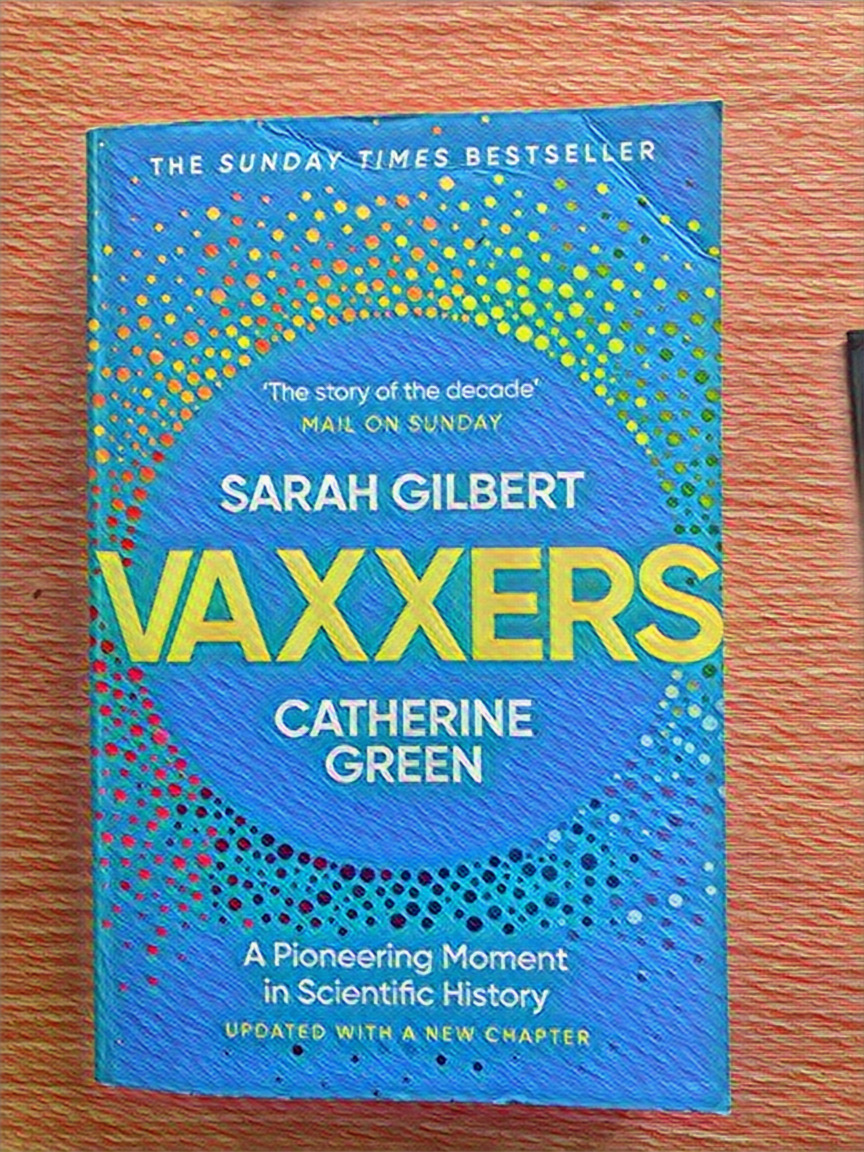Vaxxers – Sarah Gilbert & Cath Green
At the start of 2020, Sarah Gilbert was the professor of vaccinology at the university of Oxford and had been working on developing vaccines for a number of years. Dr Cath Green had a half-time role as head of the Clinical Biomanufacturing Facility (CBF) and half-time running a research team at the Welcome Centre for Human Genetics.
Vaxxers is the story of how they worked on the Covid-19 vaccine development and gives us behind-the-scenes glimpse into the process.
What strikes one first is how quickly the scientists were onto the problem. From 1 Jan 2020, the clock started ticking for Sarah and Cath. Another striking feature is how this vaccine emerged from a busy research lab – with all that entails – scoping out the next research project, writing new research bids, the need to publish and present and how this process just cycles. The complexity of grant writing in those first weeks of 2020 is laid out as priorities shift and all of this against a backdrop of their personal lives, which were far from ordinary.
In terms of a potential global threat, there was always the thought that Disease X could emerge and cause global issues. Disease X was an undistinguished pathogen/pandemic. The WHO had a top-ten list of priority diseases – Disease X was on this list – no-one knew what it may be or when it would emerge, but experts agreed that the emergence of something, sometime soon was inevitable.
Sarah writes about the development of the platform technology – meaning it can be used to make many different vaccines.
‘In Jan, Feb and March, we were out on a limb; working at financial risk to the university, and probably at even greater risk to our professional reputation, but by April there was widespread recognition that resourcing research into Covid-19 vaccines was an urgent priority. We were allowed to do a ‘big shop’ and put all the ingredients we needed into the trolley all at once.’
The funding cycles became compressed – cutting years out of the development process and the amounts of money available also hugely increased.
By May 2020, the US government also put in $1.2 bn into the US trial for the Oxford AZ vaccine, through its Operation Warp speed Programme.
I love Cath’s analogy when AZ came on board: ‘We were like a family-run pizzeria and they were like Pizza Express. The scale-up was daunting, going from a few hundred vials to millions, perhaps even billions.’
The changes are highlighted when the agreement with Astra Zeneca was announced – meeting requests, documentation and samples came thick and fast. AZ being an enormous entity had an impact on the logistics of getting the early batches to the UK trial sites. Initially, there were 18 trial sites planned in the UK. The work built up, with the necessary packing and shipping to each of these all done with military precision. Add to this the increased demand as each site called for greater volume of vaccine supply.
The initial manufacturing site was in Italy, where the next batch was located. Then it became apparent that there were no commercial flights to get the vaccine out and delivered to the places it was needed – which became a serious issue. Then came the suggestion of chartering a private jet – usually beyond the budget of a small academic clinical trial, but these were strange times. With a major pharma business on board, permissions to proceed were becoming far easier and consequently the jet from Rome landed in London the very next day – no passengers, just a box of dry ice and its precious cargo.
Throughout the book they break the science and manufacturing process down carefully into digestible portions and lay out their work for all to grasp – even providing a blow-by-blow itemized list of all components of the vaccine in the Appendix.
On March 10, 2020, Sarah was invited to a private meeting of the parliamentary Science and Technology Committee. Stating her case, she explained the work being done in Oxford and why it was vital to proceed as a matter of urgency. That was underpinned when the next day the WHO declared Covid-19 a global pandemic.
The following stages and months became, in Sarah’s words, ‘hectic and surreal’, achieving results and completing workloads that would usually take years.
There are some lovely touches scattered throughout the book – such as when Sarah effectively receives her own vaccine. The way that the Gilbert family Christmas jigsaw is referred to, which obviously features as a wonderful metaphor. The online bakery zooms with Cath and her family and the description of Cath and her daughter on a brief holiday in Wales.
Interestingly, with the political rhetoric swept aside, the book ends with a stark message (Ed. Published in 2022).
‘We have to invest in our pandemic defences. Disease Y is coming but we can and we surely must do better next time’.
Their relentless drive and professionalism shine through in this book. Not just a great scientific chronicle of this most stressful time but also a window into the ordinary lives of two hard-working and dedicated scientists.





No Comments